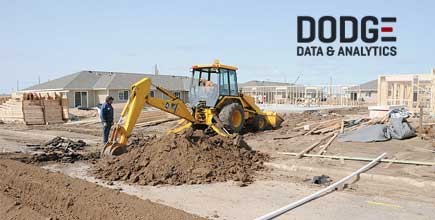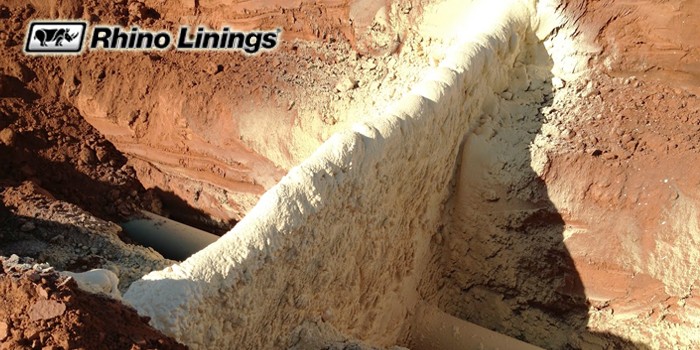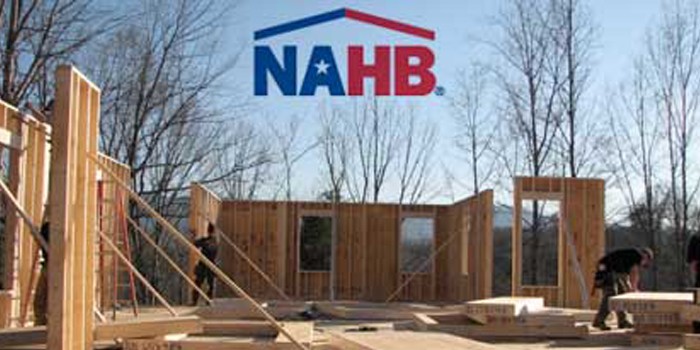February Construction Starts Jump 16 Percent, According to Report

NEW YORK, NY– March 23, 2015 – At a seasonally adjusted annual rate of $724.3 billion, new construction starts in February advanced 16 percent compared to the previous month, according to Dodge Data & Analytics. Much of the lift came from three massive projects valued each in excess of $1 billion that were included as February construction starts. The nonbuilding construction sector was boosted by an $8.4 billion liquefied natural gas (LNG) export terminal in Louisiana and a $1.2 billion solar power facility in California, while nonresidential building registered a sharp gain partly as the result of a $3.0 billion petrochemical plant in Texas. Residential building also strengthened in February, as growth for multifamily housing outweighed a loss of momentum by single family housing. For the first two months of 2015, total construction starts on an unadjusted basis were up 34% from the same period a year ago. If projects in excess of $1 billion are excluded, the result would be more moderate gains for total construction – up 10 percent in February on a seasonally adjusted basis relative to January, and up 8% on an unadjusted basis during the first two months of 2015 relative to the same period a year ago.
The February statistics produced a reading of 153 for the Dodge Index (2000=100), compared to a revised 132 for January. For 2014 as whole, the Dodge Index averaged 123.
"Due to the presence of several unusually large projects, the first two months of 2015 witnessed an especially elevated level of activity that's exceeded the underlying trend for construction starts," stated Robert A. Murray, chief economist for Dodge Data & Analytics. "Some pullback can be expected in coming months, since there are only a limited number of LNG-related projects that may reach the construction start stage and petrochemical plants are not likely to match the exceptional amount that was reported last year, particularly with the recent decline in oil prices.
"At the same time, the first two months of 2015 have shown several noteworthy features that point towards the continued expansion for overall construction activity," Murray continued. "For commercial building, both office buildings and hotels are continuing to track upward, supported by the increasing amount of private financing directed at real estate development. For institutional building, school construction is now seeing the benefits of large school construction bond measures that were approved in recent years, while healthcare facilities registered an unexpectedly strong performance in February. For residential building, multifamily housing continues to show brisk development activity in major cities. One area of concern for overall construction activity in 2015 relates to single family housing – will it be able to move beyond the extended plateau that took hold in 2014? Another area of concern relates to public works and specifically highway and bridge construction – will Congress be able to reach agreement on a new multiyear federal transportation bill by the end of May, or at the very least a continuing resolution that shores up the depleted Highway Trust Fund?"
Nonbuilding construction in February increased 9% to $253.8 billion (annual rate), which followed its substantial 92% hike in January. The electric utility and gas plant category in February topped its heightened January amount by 17%, with the inclusion of the Sempra LNG export terminal in Hackberry LA at an estimated construction start cost of $8.4 billion. (In January, two segments of an LNG export facility in Freeport TX valued at $6.0 billion were included as construction starts.) Other large projects that lifted the electric power and gas plant category in February were the $1.2 billion Stateline Solar Farm in California, a $675 million natural gas-fired power plant in Maryland, and another solar power facility in California valued at $450 million. Public works construction as a group improved 2% in February, with a substantial push coming from highways and bridges which advanced 12%. Large highway and bridge projects in February were led by several in the New York NY metropolitan area – a $283 million tunnel rehabilitation in Brooklyn NY, a $213 million toll plaza rehabilitation at the RFK Bridge in the Bronx NY, and a $96 million toll plaza improvement project on the New Jersey Turnpike in Bayonne NJ. The environmental public works categories in February were mixed, with river/harbor development up 29%, sewer construction up 4%, and water supply construction down 3%. The miscellaneous public works category, which had been boosted in January by the start of the $350 million Sun Life Stadium modernization in the Miami FL area, fell 33% in February.
Nonresidential building, at $224.9 billion (annual rate), surged 42% in February after a relatively weak performance in January. The manufacturing building category was a major contributor, soaring 663% in February with $3.0 billion for the estimated construction start cost of the Formosa ethane cracker and propane dehydrogenation plant in Point Comfort TX. The next largest manufacturing building starts in February were considerably smaller in scale – a $169 million manufacturing research lab in California and a $43 million carpet manufacturing plant in Georgia. If the manufacturing building category is excluded, nonresidential building in February would still have registered a 19% gain. The commercial building group grew 19% in February, with a varied performance by project type. Hotel construction bounced back 83% after a depressed January, led by $138 million for the hotel portion of the $400 million Four Seasons mixed-use tower in Boston MA and $108 million for the hotel portion of the $245 million Stadium Towers mixed-use project in Seattle WA. Office construction in February climbed 19%, featuring groundbreaking for these projects – a $400 million office building at the Hudson Yards development site in New York NY, a $150 million office building in Seattle WA, and $112 million for the office portion of the Stadium Towers mixed-February, with stores down 9% and warehouses down 15%.
The institutional side of the nonresidential building market rebounded 20% in February after a lackluster January. Educational facilities, the largest nonresidential building category by dollar volume, grew 14% as it regained the upward momentum that was established in 2014. Large educational facility projects that reached groundbreaking in February included a $133 million high school in Spring TX, a $67 million public safety training facility (for fire and rescue personnel) in Gaithersburg MD, a $61 million high school in Maywood CA, and a $60 million business school at the University of California Berkeley. Healthcare facilities in February jumped 92% after a weak January, reflecting the start of these hospital projects – the $540 million Methodist Hospital North Campus Tower in Houston TX, the $228 million Northwestern Lake Forest Hospital in Lake Forest IL, and the $165 million Cambridge North Tower in Kansas City KS. The smaller institutional categories in February were mixed, with gains reported for transportation terminals, up 27%; and public buildings, up 22%; while declines were reported for churches, down 26%; and amusement-related projects, down 45%.
Residential building in February grew 5% to $245.7 billion (annual rate), making a partial rebound after an 8% decline in January. Multifamily housing registered a strong February, jumping 46%. There were nine multifamily projects valued in excess of $100 million that reached groundbreaking in February, led by the following – the $500 million Flushing Commons apartment complex expansion in Queens NY, a $300 million apartment high-rise in New York NY, and the $262 million condominium portion of the Four Seasons mixed-use tower in Boston MA. Through the first two months of 2015, the top five metropolitan areas ranked by the dollar volume of multifamily starts were as follows – New York NY, Boston MA, Miami FL, Washington DC, and Houston TX. Single family housing in February slipped back 7%, as severe winter weather in the Northeast led to 24% plunge for that region. Single family declines were also reported for the South Atlantic, down 12%; the South Central, down 10%; and the Midwest, down 1%; while the West posted a modest 3% gain.
The 34% increase for total construction starts on an unadjusted basis during 2015, relative to 2014, was the result of greater activity for all three major construction sectors. Nonbuilding construction year-to-date soared 89%, with electric utilities and gas plants up 944% while public works retreated 7%. Nonresidential building year-to-date increased 22%, with manufacturing buildings and institutional buildings each up 26% while commercial buildings climbed 15%. Residential building year-to-date improved 7%, with single family housing up 7% and multifamily housing up 9%. By geography, total construction starts for the January-February period of 2015 revealed this behavior compared to last year – the South Central, up 126%; the Northeast, up 12%; the South Atlantic, up 9%; the West, up 3%; and the Midwest, down 5%.
Added perspective is obtained by looking at twelve-month moving totals, in this case the twelve months ending February 2015 versus the twelve months ending February 2014, which lessens the volatility inherent in comparisons of just two months. On this basis, total construction starts advanced 11%, as the result of the following performance by major sector – nonresidential building, up 24%; residential building, up 9%; and nonbuilding construction, up 1%. By geography, the twelve months ending February 2015 showed this pattern for total construction starts – the South Central, up 27%; the South Atlantic, up 13%; the West, up 8%; the Northeast, up 3%; and the Midwest, up 1%.

 About Dodge Data & Analytics: Dodge Data & Analytics is the leading provider of data, analytics, news and intelligence serving the North American construction industry. The company's information enables building product manufacturers, general contractors and subcontractors, architects and engineers to size markets, prioritize prospects, target and build relationships, strengthen market positions, and optimize sales strategies. The company's brands include Dodge, Dodge MarketShareTM, Dodge BuildShare®, Dodge SpecShare®, Sweets, Architectural Record, and Engineering News-Record. To learn more, please use the contact information and links provided below.
About Dodge Data & Analytics: Dodge Data & Analytics is the leading provider of data, analytics, news and intelligence serving the North American construction industry. The company's information enables building product manufacturers, general contractors and subcontractors, architects and engineers to size markets, prioritize prospects, target and build relationships, strengthen market positions, and optimize sales strategies. The company's brands include Dodge, Dodge MarketShareTM, Dodge BuildShare®, Dodge SpecShare®, Sweets, Architectural Record, and Engineering News-Record. To learn more, please use the contact information and links provided below.
construction, spray foam, residential housing, key performance indicator
Disqus website name not provided.









































